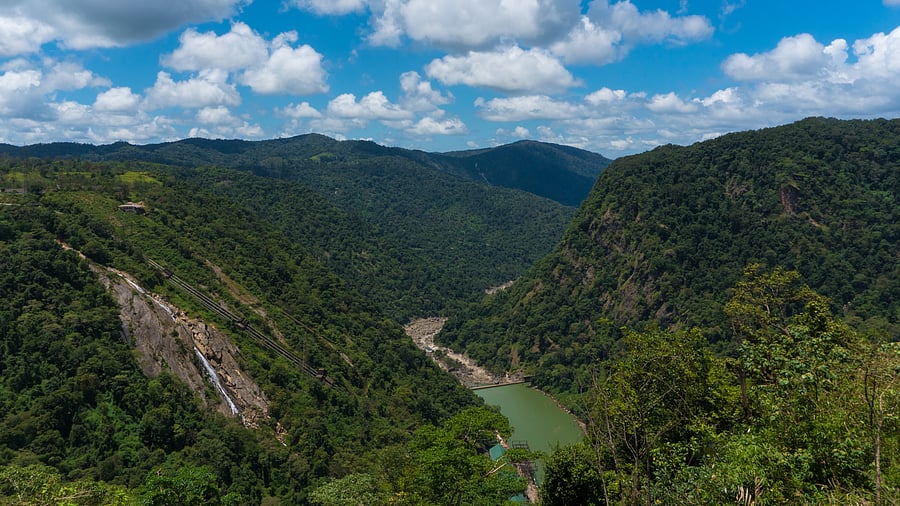
Sharavathi valley sanctuary, formed in 1978, was extended in 2019 to include the Aghanashini LTM conservation reserve.
Credit: DH File Photo
Bengaluru: The National Board of Wildlife (NBWL) has given in-principle approval to the controversial pumped storage project (PSP) in the Sharavathi Valley Lion Tailed Macaque (LTM) sanctuary.
The project proposed by the Karnataka Power Corporation Limited (KPCL) seeks to build a powerhouse between the existing Talakalale dam as upper reservoir and Gerusoppa as lower dam to generate 2000 MW power. The project requires 352.77 acre, of which 133.81 acre is forest land.
At its 84th meeting, the NBWL standing committee looked into the impact of the work on the wildlife, especially the flagship LTM. The board took note of the findings that the sanctuary houses 700 individuals of the arboreal species "which is the highest in any protected area".
It advised the KPCL to explore the possibility of reducing the number of trees to be felled. About 15000 trees are proposed to be felled for the project. The board noted that about 12000 trees can be saved if a proposed road was built underground. It also suggested noise control measures during the construction period.
Two members of the members of the NBWL, H S Singh and R Sukumar expressed concerns about the project. Singh questioned the cost-to-benefit ratio of the project and suggested that a committee of the NBWL take up site inspection. Sukumar noted that the proposal does not provide full details of the ecological loss in terms of forest cover and sought a careful examination through a thorough environment impact assessment.
Subhash Malkhede, the then chief wildlife warden, Karnataka, stated that the reservoirs already exist and the power house was underground. "During the day hours, with the generation of solar power, water would be pumped up to Talakalale which is the upper reservoir. During evening hours, which is peak time, water would be flowed to Gerusoppa dam which is a Lower reservoir to generate electricity. He further mentioned that it is a green project which will not have much ecological impact on the area," the minutes said.
The Board was also made aware of the pertinent questions raised about the project, especially the glaring omission of key components of the project like the infrastructure for power evacuation and the lack of a satisfactory explanation by the KPCL on why the PSP should not be treated like a hydro electric project. However, the Board decided to leave it to the "competent authority" to look into the matter.
"The Chairman suggested that the proposal may be placed again for the consideration of the Standing Committee upon its forest clearance. The proposal may be recommended in-principle with the conditions imposed by the Chief Wild Life Warden," the minutes of the meeting said, listing a total of 28 conditions.
The minutes, however, remained silent on the suggestion of Singh for site inspection. The in-principle approval now brings the project before the Forest Advisory Committee, the "competent authority" that decides on the use of forest land.